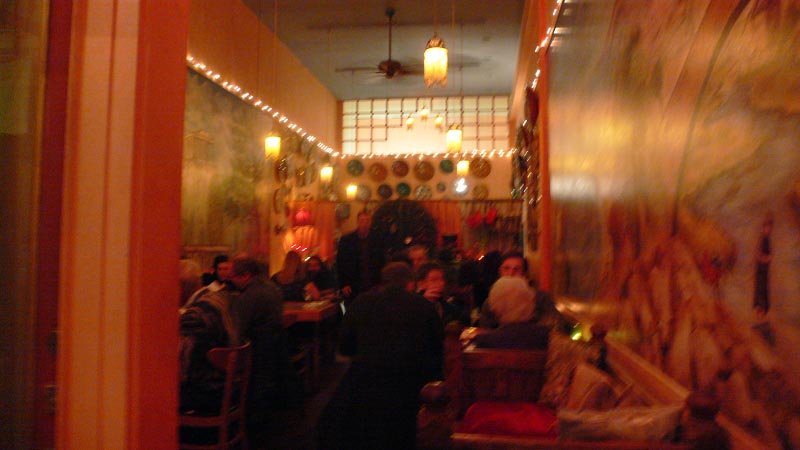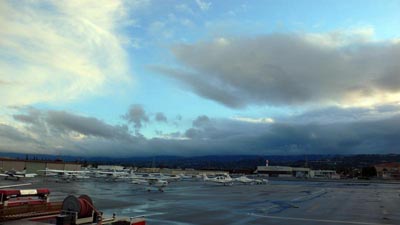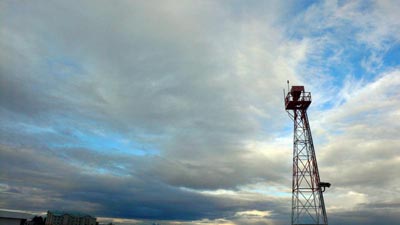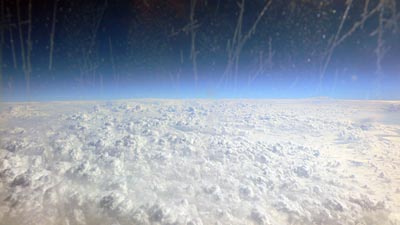
Daily Archives: February 23, 2007
Flying with the Storm
Zatar Restaurant
“Eclectic Mediterranean Cuisine”.
 |
  |
Well worth stopping. Reminds me, in some ways of Madison’s excellent Himul Chuli, with a Berkeley twist or two. Zatar’s website. KQED has a review . Click for larger photos. Kelly’s salad was superb.
Specter’s Letter from Moscow
The murder of Anna Politkovskaya was at once unbelievable and utterly expected. She had been hunted and attacked before. I 2001, she fled to Vienna after receiving e-mailed threats claiming that a special-services police officer whom she had accused o committing atrocities against civilians (and who was eventually convicted of the crimes) was bent on revenge. While she was abroad a woman who looked very much like her was shot and killed in front of Politkovskaya’s Moscow apartment building. Polic investigators believe the bullet was meant for Politkovskaya. In 2004, she became violently ill after drinking tea on a flight to Beslan in North Ossetia, where, at the request of Chechen leaders, she was to negotiate with terrorists who had seized a school and take more than eleven hundred hostages, most of them children. The Russian Army, which had bungled its response to the siege, did no want her there. Upon landing in Rostov, she was rushed to the hospital; the next day, she was flown by private jet to Moscow fo treatment. By the time she arrived, her blood-test results and other medical records had somehow disappeared. She survived, only t be called a “midwife to terror.” The threats became continuous: calls in the middle of the night, letters, e-mails, all ominous, al promising the worst. “Anna knew the risks only too well,’’ her sister told me. Politkovskaya was born in New York while her fathe was serving at the United Nations, in 1958; not long ago, her family persuaded her to obtain an American passport. “But that was a far as she would go,” Kudimova said. “We all begged her to stop. We begged. My parents. Her editors. Her children. But she alway answered the same way: ‘How could I live with myself if I didn’t write the truth?’
A Rare Heavenly Arc
No, this isn’t an upside-down rainbow, and the photographer hasn’t faked the picture. It’s an unusual phenomenon caused by sunlight shining through a thin, invisible screen of tiny ice crystals high in the sky and has nothing at all to do with the rain.
Andrew G. Saffas, a Concord artist and photographer, saw the colorful arc at 3:51 p.m. on a beautiful day recently when a slight rain had fallen in the morning. He thought it was a rainbow, created by raindrops refracting sunlight the way glass prisms refract any bright beam of light.
Instead, what Saffas saw was what scientists call a circumzenithal arc, according to physicist Joe Jordan, a former NASA space scientist at the Ames Research Center in Mountain View, who is now director of the Sky Power Institute in Santa Cruz, which promotes solar power and other alternative fuels.




